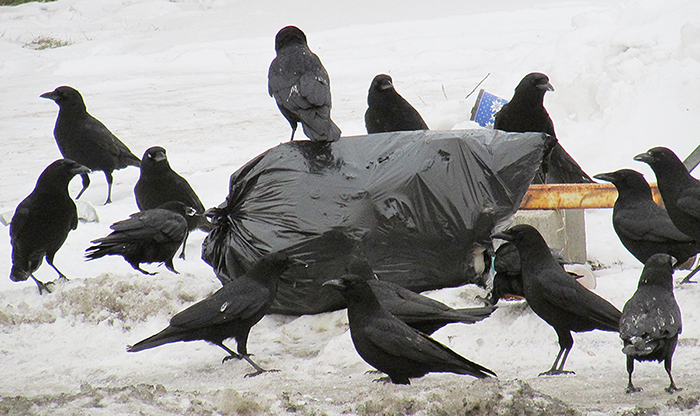
Something is continuing to kill off crows in our area. Reports surfaced last week of quantities of crows being found dead along Riverview Drive between Keil Drive and Bloomfield Road.
Local health and wildlife officials said they’re aware of the issue and are keeping an eye on what is transpiring.
“We have heard quite a few people complain about it,” said Myriam Armstrong, operations manager at Pet and Wildlife Rescue. “We did send several birds for testing. Some of the birds came back positive. “The avian flu is in Chatham-Kent. We don’t know for certain if all the birds are dead because of the flu, however.”
The dead birds go to the Canadian Wildlife Health Cooperative (CWHC) for testing.
Dr. David Colby said the ailment that is predominantly responsible for the dead crows is orthoreovirus. He said the virus is of minimal concern to humans.
“There is no evidence that this virus is zoonotic (capable of jumping to humans),” he said in an e-mail response to The Voice. “H5N1 avian influenza (which has zoonotic potential) has been circulating in wild birds in North America for well over a year. It is occasionally detected in our crows but seems to be more of an incidental finding.”
Brian Stevens, a wildlife pathologist with CWHC, confirmed the orthoreovirus is the big killer.
“We received a number of crows from the Chatham-Kent region since December. The majority of them have been dying from an orthoreovirus infection, which is a common cause of death of crows during the winter months (especially when they flock together in large groups),” he said.
However, it has been some time since any dead crows from C-K were tested by CWHC.
“We haven’t brought in crows in the past month or so from that area as it is likely that any additional deaths are the result of this orthoreovirus infection, but we continue to receive calls and reports from the area and from what are hearing, the death toll in the region is in the hundreds (with at least two separate areas having close to or more than 100 crows dead this winter),” Stevens said.
Colby added there have been no reported human cases of H5N1 locally.
He advises the public to stay away from any dead birds they may find.
“We do not recommend that the public handle sick or dead wildlife. If people need to clean up carcasses, we recommend wearing PPE (disposable gloves, surgical mask and eye protection) as a precaution. Cases of sick wildlife can be reported to local wildlife rehabilitation centres,” he said.
Armstrong said if you spot dead birds, contact PAWR. If the carcass is on public property, Public Works will send personnel to pick up the remains.
Armstrong said PAWR sent a bald eagle and two owls to CWHC for testing in December. The eagle and one of the owls came back positive for “avian flu.”
Two crows were sent for testing at the same time, with one of them coming back as positive for avian flu as well, she said.
Stevens confirmed one of the crows they’ve tested did show positive for the H5N1 avian influenza virus.
Stevens said he’s not familiar with the PAWR raptors that were sent for testing, “but I know at least one great horned owl that had come from them through another rehabilitator tested positive for avian influenza virus. We don’t have confirmatory results from the CFIA on the strain of virus that affected this owl, but based on the preliminary testing, we suspect that it was infected with the H5N1 strain as well.”






